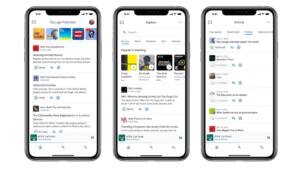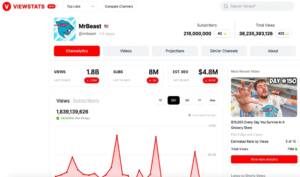Newsletters have become a popular medium for delivering curated content, industry insights, and valuable information directly to subscribers’ inboxes. Beyond providing valuable content, newsletters also offer a unique opportunity for creators to monetize their efforts through sponsorships.
In this comprehensive guide, we will explore the world of newsletter sponsorships, including strategies for securing brand deals, integrating sponsors effectively, and maximizing revenue potential.
The Value of Newsletter Sponsorships
Newsletter sponsorships provide a win-win situation for both creators and brands. Creators can monetize their newsletters while maintaining the trust and engagement of their audience. At the same time, brands gain access to a highly targeted audience and the opportunity to promote their products or services. Here are a few examples of tech newsletters and the types of sponsors they often collaborate with:
Tech Insights Weekly: This newsletter focuses on delivering the latest tech industry news, product reviews, and insights. Tech software companies, SaaS providers, and consumer electronics brands often seek sponsorship opportunities with “Tech Insights Weekly” to reach their target audience of tech enthusiasts.
Entrepreneur’s Edge: Targeting aspiring and established entrepreneurs, this newsletter offers valuable advice, tips, and resources for business growth. Business software providers, productivity tools, and professional development platforms are examples of potential sponsors seeking to connect with the “Entrepreneur’s Edge” audience.
Building Your Subscriber Base: Before actively seeking brand deals, it’s important to establish a solid subscriber base. While there is no specific threshold for the number of subscribers required to secure sponsorships, though a larger and more engaged audience tends to attract more interest from brands.
Here are some strategies to grow your newsletter subscribers
Compelling Opt-in Incentives: Offer valuable content upgrades, exclusive resources, or access to a community to incentivize readers to subscribe.
Cross-Promotion: Collaborate with other newsletter creators or influencers in related niches to cross-promote each other’s newsletters and gain exposure to new audiences.
Social Media Promotion: Leverage social media platforms to promote your newsletter and engage with potential subscribers. Encourage your existing audience to share and recommend your newsletter to their networks.
Crafting an Attractive Sponsorship Proposal: When approaching brands for sponsorship deals, it’s crucial to create a compelling sponsorship proposal that highlights the value you provide and aligns with their objectives. Consider the following elements when crafting your proposal:
Audience Profile: Provide an overview of your subscriber demographics, including their interests, preferences, and engagement metrics. Showcase the relevance and value of your audience to potential sponsors.
Engagement Statistics: Share key metrics such as open rates, click-through rates, and conversion rates to demonstrate the level of engagement and interaction your newsletter generates.
Sponsorship Options: Present different sponsorship opportunities, including banner ads, sponsored content, dedicated newsletters, or exclusive offers to capture the brand’s interest. Tailor these options to align with their goals and target audience.
Integrating Sponsors Effectively: To maintain the trust and engagement of your subscribers, it’s essential to integrate sponsors seamlessly into your newsletters. Consider the following approaches:
Native Content: Craft sponsored content that matches your newsletter’s style and tone, providing value to your audience while highlighting the sponsor’s offerings.
Curated Recommendations: Recommend sponsored products or services as part of your regular content, positioning them as valuable resources or solutions for your readers.
Exclusive Offers: Provide exclusive discounts or promotions for your subscribers, creating a sense of exclusivity and added value.
Nurturing Long-Term Partnerships: Building strong relationships with sponsors is key to recurring revenue and long-term partnerships. Consider the following strategies to nurture sponsor relationships:
Deliver on Promises: Ensure that you meet the agreed-upon deliverables and deadlines, providing sponsors with a positive experience.
Communication and Feedback: Regularly communicate with sponsors, providing updates, seeking feedback, and addressing any concerns or suggestions they may have.
Track Performance: Monitor and share campaign performance metrics with sponsors, demonstrating the impact of their sponsorship and the value they receive.
Which metrics should you track for your newsletter?
When it comes to tracking metrics for your newsletter, it’s important to focus on key performance indicators (KPIs) that provide insights into the engagement and effectiveness of your content. Here are some metrics that newsletters should consider tracking:
Open Rate: This metric measures the percentage of subscribers who open your newsletter. A high open rate indicates that your subject lines and preview text are compelling and resonating with your audience.
Click-through Rate (CTR): CTR measures the percentage of subscribers who click on a link within your newsletter. It reflects the level of interest and engagement your content generates. Tracking CTR helps you identify the topics, calls-to-action, or sections that resonate most with your audience.
Conversion Rate: Conversion rate measures the percentage of subscribers who take a desired action, such as making a purchase, signing up for a webinar, or downloading a resource. By tracking this metric, you can evaluate the effectiveness of your newsletter in driving desired outcomes.
Subscriber Growth: Keep track of the growth rate of your subscriber base. This metric helps you understand the success of your audience acquisition efforts and the overall reach of your newsletter.
Unsubscribe Rate: Monitor the rate at which subscribers choose to unsubscribe from your newsletter. A high unsubscribe rate may indicate that your content or frequency does not align with subscribers’ expectations. Analyze this metric to identify potential areas for improvement.
Bounce Rate: Bounce rate measures the percentage of undeliverable emails due to invalid email addresses or other technical issues. A high bounce rate can impact your overall deliverability and email reputation.
Time Spent on Page: If you have a web version of your newsletter or drive traffic to a landing page, tracking the average time spent on the page can give you insights into how engaged your audience is with the content. Longer average time spent indicates higher engagement and interest.
Social Media Shares: Monitor the number of shares your newsletter content receives on social media platforms. This metric provides an indication of the virality and reach of your content beyond your subscriber base.
Revenue or Conversion Value: If your newsletter includes sponsored content or affiliate links, track the revenue generated or the value of conversions attributed to those links. This metric helps demonstrate the tangible impact of your newsletter in driving revenue for sponsors and partners.
Feedback and Surveys: While not a traditional metric, collecting feedback through surveys or directly from your subscribers can provide qualitative insights into their preferences, interests, and satisfaction levels. This feedback can help shape the content and direction of your newsletter.
Newsletter sponsorships offer a lucrative opportunity for creators to monetize their content while providing brands with a targeted platform to reach their desired audience.
By focusing on building a solid subscriber base, crafting compelling sponsorship proposals, integrating sponsors effectively, and nurturing long-term partnerships, newsletter creators can unlock the potential of brand sponsorships and generate recurring revenue.
As the popularity of newsletters continues to grow, embracing sponsorships can be a strategic step towards maximizing your newsletter’s impact and profitability.




